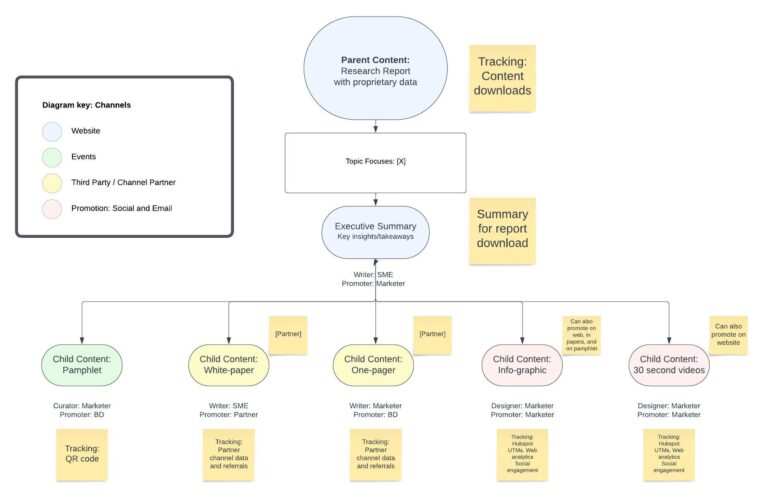By Tom Swanson, Engagement Manager at Heinz Marketing While making images for this post, I asked ChatGPT to write a joke about RACI vs. DACI. The result was too funny to not add in: Why did the RACI model...
By Tom Swanson, Engagement Manager at Heinz Marketing
While making images for this post, I asked ChatGPT to write a joke about RACI vs. DACI.
The result was too funny to not add in:
Why did the RACI model refuse to play chess with the DACI model?
Because every time RACI said ’┐ĮCheck,’┐Į DACI responded with ’┐ĮBut who’┐Įs driving the strategy?’┐Į
It just doesn’┐Įt quite make sense, but the heart is there.
Anyway:
The new year often brings with it new processes.
At least those are my favorite gifts to unwrap.
Nothing like the smell of a fresh workflow, ready to be tested and inevitably picked apart by well-meaning teams.
However today, I have a different gift:
Role Clarity
There are a lot of ways to define roles and responsibilities.
Yet most rely on tacit knowledge and good, old-fashioned go-getter logic.
This will break with scale.
While many models exist, my personal favorite is the RACI.’┐Į Here is a link for the unfamiliar.
I find the simplicity of four levels of involvement to be simple enough to understand while handling most things that come up.
Now we have another contender for the 4-part model of role definition, the obnoxiously similar-yet-different DACI.
Enough preamble, let’┐Įs get into it.
Quick definitions
RACI: Responsible, Accountable, Consulted, Informed
DACI: Driver, Approver, Contributor, Informed
The acronyms sound nearly identical (it’┐Įs just one letter), the meaning of each is changed.’┐Į I am annoyed by this because it makes it hard to apply both and switch between depending on the situation.
The gist of it is pretty simple:
RACI is the better choice for discrete projects with a start point, steps, and an endpoint.
DACI is superior when looking at ongoing process ownership without clear endpoints and where the steps might vary.
When managing change, it is important to reduce confusion factors.
It might make sense to apply each model to different situations in theory.’┐Į Not recommended.’┐Į You will wind up having a lot of clarifying conversations.
The bad news: you should probably pick one and stick with it.
The good news: each of them has more flexibility than it initially appears.
Here is what you need to consider when selecting.
Choosing Between RACI and DACI

There is a lot to consider because this is a big deal. ’┐Į
Take it slow, test things out. ’┐Į Try running a test or two in each model, if you are having trouble deciding.’┐Į Track the types of questions that come up with each, in your unique context.Implementing Your Chosen Framework
Once you’┐Įve selected RACI or DACI and tested it out, we are off to implementation. ’┐ĮThis is the make-or-break point, so it is important to have a plan so you can be clear.’┐Į Don’┐Įt adhere to the plan too hard though, adapt when it makes sense.
This involves:
Clear Communication: Articulate the reasons behind choosing a particular framework and how it aligns with the project’┐Įs objectives. Ensure everyone understands their role and the overall process. Training and Tools: Provide necessary training and tools to support the adopted framework. This could range from simple explanatory sessions to more in-depth workshops, depending on the complexity of the framework and the team’┐Įs familiarity with it. Feedback and Adjustment: Actively gather feedback from your team. If the chosen framework isn’┐Įt working as expected, be ready to adjust. Flexibility is crucial, just make sure you are telling your team what/why, and giving them the time and grace to acclimate.Conclusion
Selecting between RACI and DACI is more than just choosing a project management tool; it’┐Įs about understanding your team’┐Įs dynamics, project needs, and organizational culture. Both frameworks have their merits, but the right choice depends on the specific context of your team and project. Remember, the goal is not just to manage tasks efficiently but to foster an environment where everyone is clear about their roles and responsibilities, thereby enhancing teamwork and project success.
If you want to talk models, reach out to me at [email protected]
The post DACI vs. RACI ’┐Į 4 Considerations appeared first on Heinz Marketing.





